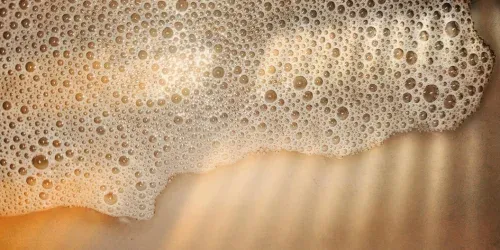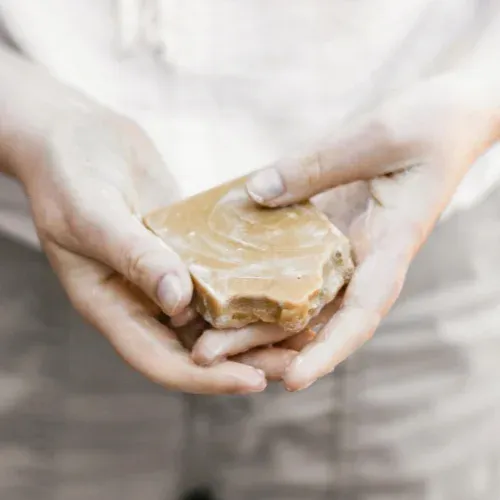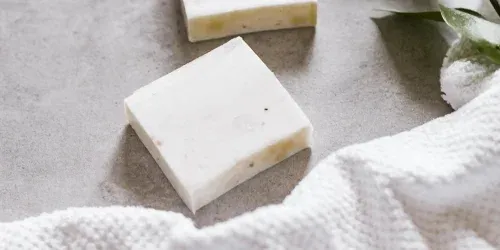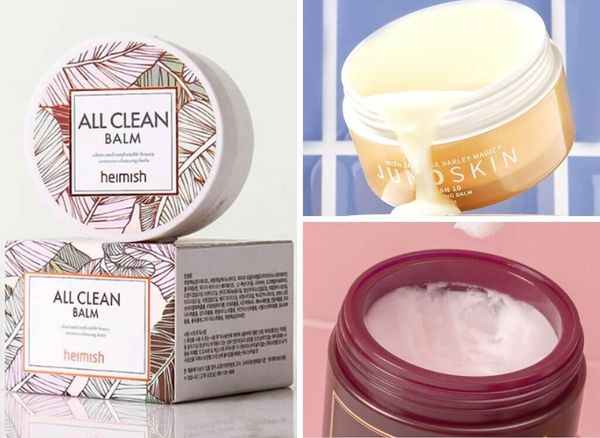Key Takeaways:
- Learn the step-by-step process of making homemade turmeric soap using natural ingredients.
- Discover the health benefits of turmeric soap for your skin, including its anti-inflammatory properties.
- Understand the different methods and essential oils that can be used to enhance your turmeric soap recipe.
Turmeric, a spice that hails from the ginger family, is not only a staple in culinary arts but also a powerhouse in skincare. Its anti-inflammatory properties and potential to provide a more even skin tone have made turmeric a sought-after ingredient in homemade soap. This article will guide you through the process of how to make turmeric soap, whether you're a seasoned soap maker or a beginner looking to create a natural, beneficial product for glowing skin.

Understanding the Basics of Soap Making
Before diving into the specifics of making turmeric soap, it's essential to grasp the fundamentals of the soap making process. Soap is created through a reaction called saponification, where fatty acids (found in oils and butters) react with an alkali (such as sodium hydroxide, also known as lye). This reaction produces soap and glycerin, resulting in a cleansing product that's much kinder to the skin than most commercial soaps.

Choosing Your Soap Making Method
There are several methods for making soap, but the two most popular are the cold process soap recipe and the melt and pour soap recipe. Cold process (CP) soap involves starting from scratch, giving you full control over the ingredients. Melt and pour soap base, on the other hand, is a pre-made base that you simply melt, customize with your chosen ingredients, and then pour into molds.
The Benefits of Turmeric in Soap
Turmeric soap benefits the skin in numerous ways. It's known for its ability to combat acne scars, reduce skin inflammation, and help with aging skin. The curcumin found in turmeric has potent anti-inflammatory properties that can help soothe dry skin and reduce the appearance of dark spots.
Preparing Your Ingredients
When making homemade turmeric soap, you'll need a variety of natural ingredients. Coconut oil, olive oil, and castor oil are common choices for their rich lather and moisturizing properties. Shea butter or cocoa butter can be added for extra nourishment. For turmeric soap, obviously, turmeric spice or fresh turmeric is essential. You can find turmeric at your local health food store or online.
The Role of Essential Oils
Essential oils not only add fragrance to your soap but can also provide additional skin benefits. Ginger essential oil, for example, complements turmeric's properties and adds a warm, spicy scent. Other oils like lavender or tea tree can be used depending on your preference and the benefits you're looking for.
Crafting Your Turmeric Soap Recipe
To create your turmeric soap recipe, you'll need to decide on the quantities of each ingredient. A soap calculator can be an invaluable tool for beginners to ensure the correct balance of oils, lye, and water. The turmeric soap recipe yield will depend on the size of your soap mold and how much turmeric powder you decide to add.
The Cold Process Method
If you choose the cold process method, you'll need to carefully prepare your lye solution and mix it with your oils. This method requires precise measurements and safety precautions, as lye is a caustic substance. Once your soap batter is ready, you can add turmeric powder, essential oils, and any other additives before pouring it into the mold.
The Melt and Pour Method
For those who prefer a simpler approach, the melt and pour soap recipe is ideal. Start by cutting your melt and pour base into chunks and melting it in a double boiler or microwave. Once melted, you can add turmeric powder, essential oils, and other ingredients like kaolin clay for added skin benefits.
Adding Turmeric to Your Soap
How much turmeric to add to your soap will depend on the desired effect. Turmeric can be potent, and adding too much may lead to a turmeric soap stain on the skin or fabrics. It's best to start with a small amount and increase it based on the color and benefits you wish to achieve.
Mixing and Pouring Your Soap Batter
Whether you're making CP soap or using a melt and pour base, once your ingredients are thoroughly mixed, it's time to pour the soap batter into your mold. If you're using a silicone soap mold, there's no need for lining, but if you're using a wooden mold, you'll need to line it with plastic wrap or parchment paper.
Preventing Air Bubbles and Ensuring a Smooth Top
After pouring, you may notice air bubbles on the surface of your soap. Gently tapping the mold on the counter can help release them. Spraying the top with rubbing alcohol can also help eliminate bubbles and ensure a smooth finish.
Curing and Unmolding Your Soap
CP soap requires a curing period, which can range from four to six weeks. This allows the soap to harden and the excess water to evaporate, resulting in a longer-lasting bar. Melt and pour soap, on the other hand, only needs to set until solid, which can take a few hours. Once set or cured, you can unmold your turmeric soap bars and enjoy them.
Cutting and Storing Your Homemade Soap
After unmolding, if you have a large block of soap, you'll need to cut it into bars. A soap cutter or a sharp knife can be used for this purpose. Store your homemade turmeric soap in a cool, dry place to extend its shelf life and maintain its quality.
Turmeric Soap for Face and Body
Turmeric face soap can be especially beneficial for those with acne-prone or inflamed skin. When using turmeric soap on your face, be mindful of its concentration to avoid any potential staining. For the body, turmeric soap can help slough off dead skin cells and provide a luxurious, moisturizing lather.

Customizing Your Turmeric Soap with Natural Additives
When crafting your DIY turmeric soap, consider enhancing its nourishing qualities with additional natural additives. Shea butter soap base is a popular choice for its rich, moisturizing properties. By incorporating a shea butter soap base into your recipe, you're not only ensuring a creamy soap lather but also providing extra hydration for the skin. This can be particularly beneficial for those with dry or sensitive skin, as shea butter is known for its ability to soothe and repair.
Another excellent additive is goat milk, which is celebrated for its anti-inflammatory properties. Including goat milk in your turmeric soap can help calm irritated skin and provide a gentle cleansing experience. The lactic acid in goat milk also acts as a mild exfoliant, helping to remove dead skin cells and reveal a brighter, more even complexion. When combined with turmeric's own anti-inflammatory benefits, you create a soap bar that's not just cleansing but also a powerhouse for skin health.
Incorporating Anti-Inflammatory Properties into Turmeric Soap
Turmeric is renowned for its anti-inflammatory properties, which can be a game-changer for skincare enthusiasts. When crafting turmeric soap, it's essential to understand how these properties can benefit the skin. Turmeric contains curcumin, a bioactive compound that has been scientifically proven to reduce inflammation and calm skin conditions. By incorporating turmeric into your soap, you're not just adding a vibrant color; you're infusing your skincare routine with a natural remedy that has been used for centuries to soothe and heal.
To maximize the anti-inflammatory benefits in your turmeric soap, consider the concentration of turmeric used. A higher concentration can provide more potent anti-inflammatory effects, but it's crucial to balance this with the overall composition of your soap to avoid staining the skin. Additionally, you can complement turmeric with other natural ingredients known for their anti-inflammatory properties, such as aloe vera or honey, to enhance the soothing effects. Remember, the goal is to create a soap that not only cleanses but also cares for the skin, reducing redness and irritation.
Exploring the Color and Design Elements of Turmeric Soap
When diving into the world of homemade soaps, the visual appeal is just as important as the benefits it offers. Turmeric, with its vibrant golden hue, not only imbues your soap with anti-inflammatory properties but also gives it a rich, warm color that is visually stunning. Crafting a soap that catches the eye requires a thoughtful approach to color balance. By using turmeric, you can achieve various shades of yellow and orange, depending on the quantity used. This natural colorant provides a unique opportunity to create a soap that stands out in both aesthetics and functionality.
In addition to color, design elements such as swirls, layers, and embeds can elevate the appearance of your turmeric soap. Techniques like the 'in-the-pot swirl' or 'layering' allow you to play with contrasting colors while maintaining the soap's anti-inflammatory properties. Experimenting with these design techniques can result in soaps that are not only beneficial for the skin but also works of art. Remember, the key is to have fun with the process and let your creativity shine through your creations.
Embracing the Anti-Inflammatory Power of Turmeric in Soap Making
Turmeric is renowned for its anti-inflammatory properties, which can be a game-changer in soap making. When incorporated into soap, turmeric can provide soothing benefits for the skin, making it an ideal ingredient for those with sensitive or problematic skin conditions. By harnessing the power of curcumin, the active compound in turmeric, soap makers can create a product that not only cleanses but also actively contributes to skin health. This is particularly beneficial for individuals looking to reduce redness and calm irritation, as the anti-inflammatory effects of turmeric can help to alleviate these symptoms.
In practical terms, adding turmeric to your soap recipe means you're not just crafting a cleansing bar; you're creating a therapeutic experience. For example, a case study might involve individuals with eczema or psoriasis who have turned to turmeric soap as a gentle alternative to harsher cleansers. The feedback often highlights a noticeable reduction in inflammation and discomfort, showcasing the real-world impact of turmeric's anti-inflammatory properties in soap. As consumers become more aware of the ingredients in their skincare products, the demand for soaps with health-boosting benefits like turmeric is on the rise.
Discovering the Aromatic World of Turmeric Soap
Turmeric isn't just a spice that adds a vibrant color and earthy flavor to our dishes; it's also renowned for its anti-inflammatory properties, which can be a game-changer in skincare. When crafting turmeric soap, the aromatic experience is just as important as the visual appeal and therapeutic benefits. By incorporating turmeric, you're not only tapping into its anti-inflammatory prowess but also infusing your soap with a warm, spicy scent that can transform your daily shower into a luxurious spa experience.
The key to maximizing the aromatic impact is to balance the turmeric with complementary essential oils. For instance, pairing turmeric with citrusy notes like orange or lemongrass can elevate the freshness of the soap, while a combination with ginger or cinnamon can enhance the warmth and spiciness. This thoughtful curation of scents not only pleases the olfactory senses but also contributes to the overall anti-inflammatory and soothing effects of the soap, making each use a holistic encounter.
Turmeric Soap: A Natural Approach to Skincare
In the realm of natural skincare, turmeric soap stands out for its anti-inflammatory properties, which can be particularly beneficial for those with sensitive or problematic skin. The active compound in turmeric, curcumin, is responsible for these properties and has been used in traditional medicine for centuries. When incorporated into soap, turmeric can help calm redness, reduce the appearance of blemishes, and provide a gentle, soothing cleanse that's suitable for all skin types.
To fully harness these benefits, it's crucial to use turmeric in the right concentration. Too little, and you may not reap the full anti-inflammatory rewards; too much, and you risk staining your skin or towels. A practical example would be to start with a small amount, such as one teaspoon of turmeric powder per pound of soap base, and adjust based on the desired effect and color. This careful calibration ensures that your turmeric soap is not only effective but also a joy to use daily.
Crafting Soaps with Turmeric: Beyond the Anti-Inflammatory Benefits
While the anti-inflammatory properties of turmeric are a significant draw, there's more to this golden spice than meets the eye. Turmeric also contains antioxidants, which can help protect the skin from environmental stressors like pollution and UV rays. These antioxidants contribute to the overall health and appearance of the skin by fighting free radicals that can cause premature aging. Soap that includes turmeric not only soothes inflammation but also offers a protective barrier against the elements, which can be particularly appealing to those living in urban areas or with active outdoor lifestyles.
Moreover, turmeric's versatility allows for a variety of soap formulations. Whether you're aiming for a soap that targets acne-prone skin or one that caters to mature skin seeking a youthful glow, turmeric can be your go-to ingredient. For instance, a soap maker might combine turmeric with other natural ingredients like honey or oatmeal to enhance the soap's nourishing and exfoliating properties. This holistic approach to skincare is becoming increasingly popular, as evidenced by the growing number of artisanal soap brands that emphasize the multifaceted benefits of turmeric in their products.
The Synergy of Turmeric and Other Natural Ingredients
Turmeric soap's anti-inflammatory properties can be further enhanced by combining it with other natural ingredients known for their skin-soothing benefits. For instance, aloe vera, with its calming and hydrating effects, can complement turmeric's ability to reduce redness and irritation. When formulating your recipe, consider adding aloe vera gel or juice to the soap batter to boost the soap's overall soothing potential. This combination can be particularly beneficial for individuals with sensitive or problematic skin, as it harnesses the power of both ingredients to provide relief and promote healing.
Another excellent partner for turmeric in soap making is honey. Honey is renowned for its antibacterial and moisturizing properties, making it an ideal additive for enhancing the soap's skin-nourishing profile. When used in conjunction with turmeric, honey can help to amplify the anti-inflammatory properties while also contributing to a softer, more supple skin feel. Incorporating honey into your turmeric soap recipe not only adds to the soap's therapeutic qualities but also imparts a natural, sweet scent that can make your bathing experience even more enjoyable.
Enhancing Turmeric Soap with Synergistic Ingredients
While turmeric alone offers significant benefits, pairing it with synergistic ingredients can elevate the anti-inflammatory properties of your soap. Ingredients like ginger, which also contains gingerol, a compound with powerful anti-inflammatory and antioxidant effects, can work in tandem with turmeric to amplify the soap's soothing capabilities. Another excellent addition is oats, which are not only gentle exfoliants but also possess anti-inflammatory and moisturizing properties that can help alleviate itchy and sensitive skin.
Incorporating oils like coconut or olive oil can also boost the anti-inflammatory potential of your turmeric soap. These oils are rich in fatty acids and antioxidants, providing a moisturizing base that complements turmeric's therapeutic effects. When selecting additional ingredients, it's important to consider their compatibility with turmeric and their contribution to the soap's overall texture and performance. By thoughtfully combining turmeric with other natural ingredients, you can create a holistic soap that targets inflammation and promotes healthy, radiant skin.
The Art of Perfecting Soap Consistency and Texture
Achieving the perfect consistency and texture in your handmade soap is both an art and a science. When working with a melted soap base, it's crucial to monitor the temperature closely. Heat your base on medium heat to prevent scorching, and stir gently to ensure an even melt. A stick blender can be a soap maker's best friend, helping to thoroughly mix the lye water and oils without introducing too many air bubbles, which can affect the smoothness of your final product.
Allowing your soap cool and soap dry properly is essential for the right texture. After pouring your soap batter into molds, let it rest undisturbed in a cool, dry place. This patience will pay off with a firm, well-formed soap bar. If you're using dried turmeric, ensure it's finely ground to avoid gritty particles in your soap. Sunflower oil is another ingredient that can improve the texture of your soap, providing a lightweight, non-greasy feel and contributing to a stable, silky lather.
Tips for a Successful Soap Making Experience
Seasoned soap makers know that patience and attention to detail are key. Always measure your ingredients accurately, follow safety guidelines when handling lye, and don't rush the process. Experimenting with different amounts of turmeric and essential oils can help you find the perfect blend for your skin type.
Troubleshooting Common Soap Making Issues
If you encounter issues like soap that won't set or a lye-heavy batch, don't be discouraged. Soap making is as much an art as it is a science, and every mistake is a learning opportunity. Consult online forums, books, or local soap making workshops for advice and support.

Summary
Making turmeric soap at home is a rewarding process that allows you to enjoy the natural skin benefits of turmeric, essential oils, and nourishing butters and oils. Whether you choose the cold process or melt and pour method, the key to successful homemade turmeric soap is careful measurement, patience, and creativity. With this guide, you're well on your way to creating turmeric soap bars that offer a wealth of benefits for your skin.

FAQs
Can turmeric soap help with acne scars and dark spots?
Yes, turmeric has properties that can help lighten acne scars and dark spots over time, contributing to a more even skin tone and glowing skin.
How long does homemade turmeric soap last?
Homemade turmeric soap can last several months if stored properly in a cool, dry place. Cold process soap has a longer shelf life than melt and pour soap due to the curing process.
Will turmeric soap stain my skin or shower?
When used in the correct amounts, turmeric soap should not stain your skin or shower. However, it's important to start with a small amount of turmeric and test your soap to ensure it's safe for use.





